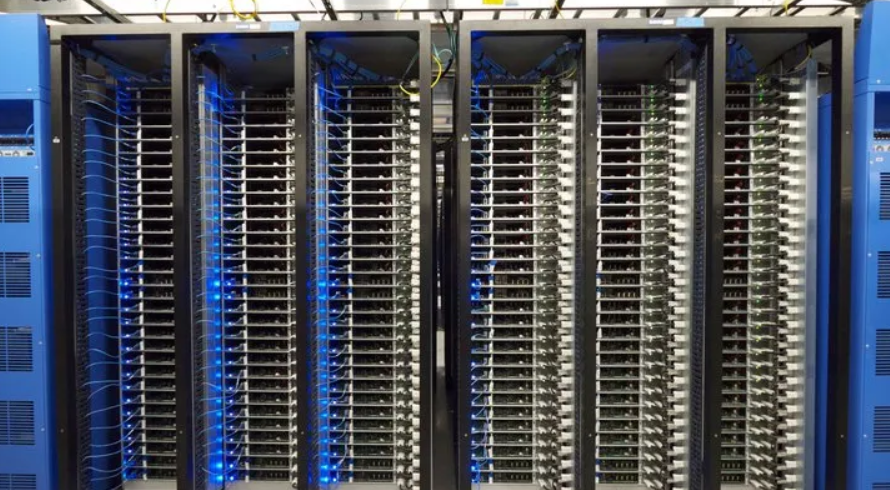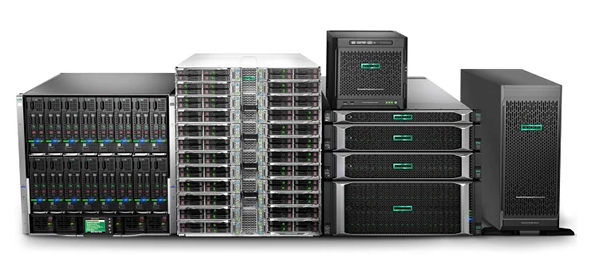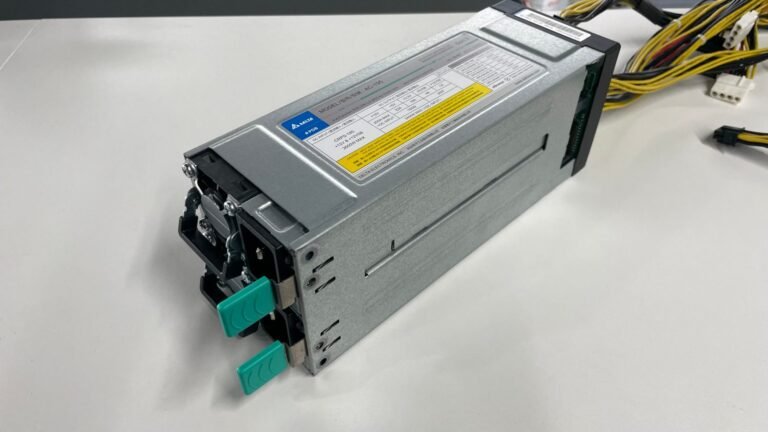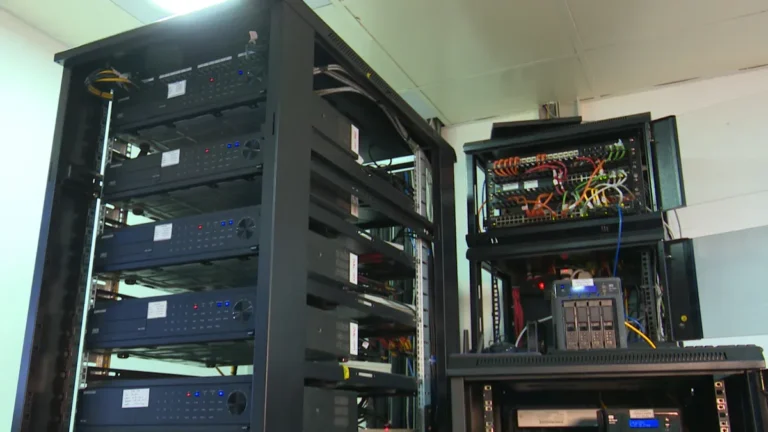In the era of digital transformation, data centers and enterprise IT infrastructure have become the backbone of global business operations. As organizations strive for efficiency, scalability, and cost-effectiveness, the design and deployment of server hardware have evolved into a critical discipline. At the heart of this evolution lie two foundational components: server chassis (the physical enclosures that house server components) and rack units (U) (the standardized unit of measurement for rack-mounted equipment). Together, these elements shape how servers are deployed, managed, and optimized within data centers—from small enterprise server rooms to hyperscale cloud facilities.
This article explores the interplay between server chassis design, rack unit standards, and their impact on deployment workflows and operational management. We will also highlight how innovative solutions from industry leaders like Shenzhen XTT Technology Co., Ltd. (http://www.sz-xtt.com) are redefining best practices in this space.

1. Understanding Server Chassis: The Foundation of Server Deployment
A server chassis is more than just a metal box; it is a carefully engineered system designed to protect, organize, and optimize server components such as motherboards, processors, memory modules, storage drives, power supplies, and cooling systems. Its design directly influences:
1.1 Form Factor and Scalability
Server chassis come in various form factors, with rack-mounted (1U, 2U, 4U, etc.) and tower (standalone) being the most common. Rack-mounted chassis are preferred in data centers due to their space efficiency, while tower chassis suit edge computing or remote offices where vertical space is limited.
The choice of chassis form factor directly impacts deployment density. For example:
- A 1U chassis (1.75 inches tall) allows for maximum rack density, ideal for high-performance computing (HPC) or cloud environments where hundreds of servers are packed into a single rack. However, 1U servers often sacrifice expandability (e.g., limited storage bays or PCIe slots) to save space.
- A 2U chassis balances density and expandability, making it a popular choice for enterprises needing room for additional hard drives, GPUs, or redundant power supplies.
- Larger chassis (4U, 6U) are reserved for specialized workloads like storage arrays or network appliances, where capacity (e.g., 24+ drive bays) outweighs space constraints.
1.2 Cooling and Thermal Management
Heat dissipation is a critical challenge in data centers, as overheating reduces performance and shortens hardware lifespan. Chassis design directly addresses this:
- Airflow design: High-end chassis feature optimized airflow paths (e.g., front-to-rear or side-to-side) with perforated panels, dust filters, and dedicated fan zones to ensure cool air reaches hot components (CPUs, GPUs) and expels warm air efficiently.
- Modular cooling: Some advanced chassis (e.g., those from Shenzhen XTT Technology) support hot-swappable fans and liquid cooling integration, allowing data centers to adapt to high-density deployments without overburdening existing HVAC systems.
1.3 Expandability and Maintenance
A well-designed chassis simplifies maintenance and future upgrades. Key features include:
- Toolless design: Screwless rails, quick-release latches, and modular components reduce deployment time from hours to minutes.
- Redundancy support: Chassis with dual power supplies (PSUs), fans, or even dual motherboards (for mission-critical applications) minimize downtime during hardware failures.
- Management ports: Integrated IPMI (Intelligent Platform Management Interface) or Redfish APIs enable remote monitoring and maintenance, even when servers are powered off.
2. Rack Units (U): The Standard for Scalable Infrastructure
Rack units (U) are a universal measurement defined by the Electronics Industries Alliance (EIA) in the EIA-310-D standard, where 1U = 1.75 inches (44.45 mm) in height. This standardization ensures compatibility across vendors, making it easier to mix and match equipment from different manufacturers in the same rack.
2.1 Why U Matters for Deployment
- Space Optimization: Data centers pay premium prices for floor space, especially in urban colocation facilities. Using higher U-density (e.g., 42U racks) allows more equipment to fit into a smaller footprint. For example, a 42U rack can hold 42 1U servers, 21 2U servers, or 10 4U storage arrays—dramatically impacting cost per square foot.
- Power and Cooling Planning: Higher U-density increases heat output, requiring robust power distribution (PDUs) and cooling infrastructure. A rack with 20 1U servers may draw 20 kW, while 10 4U storage arrays might draw 15 kW—but the latter requires better airflow management due to larger, hotter components.
- Future-Proofing: Choosing the right U size for current needs while leaving room for expansion is critical. For instance, a 1U chassis might seem ideal today, but if an organization plans to add GPU accelerators or NVMe storage, a 2U chassis with pre-routed PCIe slots and additional power capacity could save costly retrofits later.
2.2 Industry Trends: Beyond Traditional U Sizing
While 1U, 2U, and 4U remain dominant, emerging workloads are driving innovation:
- Edge Computing: Smaller form factors (e.g., ½U or ¼U) are gaining traction in edge data centers, where space and power are constrained, but low-latency processing is required.
- Hyperconverged Infrastructure (HCI): HCI appliances often use custom chassis that integrate compute, storage, and networking into a single U-sized unit, simplifying deployment and management.
3. The Combined Impact on Server Deployment
The interaction between server chassis and rack units defines the efficiency, cost, and flexibility of data center deployments. Here’s how they work together:
3.1 Space vs. Performance Tradeoffs
A 1U server in a 42U rack delivers unmatched density, but it may require expensive upgrades to power and cooling. Conversely, a 4U storage array offers massive capacity but uses more rack space. Organizations must balance these factors based on workload:
- Cloud/ HPC: Prioritize 1U/2U chassis for compute density.
- Big Data/ Analytics: Use 4U/6U chassis for storage-heavy workloads.
- Edge/ Remote Offices: Opt for compact tower or 1U chassis with ruggedized designs.
3.2 Simplifying Deployment Workflows
Modern data centers aim for “rack-and-roll” deployments, where pre-configured servers are shipped in racks and deployed in hours instead of weeks. This requires:
- Chassis-Rack Compatibility: Chassis must fit standard rack depths (e.g., 30″, 36″) and include mounting rails compatible with the rack’s U spacing.
- Pre-Integration: Vendors like Shenzhen XTT Technology now offer “rack-in-a-box” solutions, where servers, networking gear, and cooling are pre-installed in a rack, reducing on-site labor errors.
3.3 Reducing Operational Costs
Efficient chassis and rack unit design directly lowers total cost of ownership (TCO):
- Energy Savings: Optimized cooling in chassis reduces HVAC load, cutting electricity bills by 10–30% in large data centers.
- Labor Efficiency: Toolless chassis and modular components reduce deployment time by 50% or more, freeing IT staff to focus on strategic tasks.
- Minimized Downtime: Hot-swappable components (enabled by robust chassis design) mean failed parts can be replaced without shutting down the entire server.
4. Shenzhen XTT Technology: Innovating Chassis and Rack Solutions
As a leading provider of server infrastructure, Shenzhen XTT Technology Co., Ltd. (http://www.sz-xtt.com) has been at the forefront of addressing deployment and management challenges through cutting-edge design. Their product portfolio includes:
- Modular Chassis: XTT’s 2U and 4U chassis feature hot-swappable fans, PSUs, and drive bays, allowing enterprises to scale storage or compute without disrupting operations.
- Smart Cooling Solutions: Integrated liquid cooling adapters and variable-speed fans reduce energy consumption by up to 40% in high-density environments.
- Rack Integration Services: XTT offers custom rack configurations, including pre-wired cabling, PDUs, and cooling systems, to match specific workload requirements.
For example, a financial services firm recently migrated to XTT’s 2U chassis with liquid cooling, reducing their data center’s cooling costs by 25% while increasing server density by 30%. Similarly, an e-commerce company used XTT’s rack-in-a-box solutions to deploy a new regional data center in just 10 days, compared to the industry average of 4–6 weeks.

5. The Future of Server Chassis and Rack Units
As technology evolves, so too will the role of server chassis and rack units:
- AI and Machine Learning: Training large AI models requires dense, high-performance compute clusters, driving demand for 1U/2U chassis with advanced cooling (e.g., immersion cooling).
- Sustainability: Regulations like the EU’s Corporate Sustainability Reporting Directive (CSRD) are pushing data centers to reduce carbon footprints. Chassis with recycled materials and energy-efficient fans will become standard.
- Edge-Native Design: As 5G and IoT grow, edge data centers will adopt smaller, ruggedized chassis (e.g., ½U) that can withstand harsh environments (temperature fluctuations, vibrations).
FAQ: Common Questions About Server Chassis and Rack Units
Q1: How do I choose between 1U, 2U, and 4U chassis for my deployment?
A: Consider your workload type, density needs, and scalability. Use 1U for high-density compute (e.g., cloud), 2U for balanced compute/storage (e.g., enterprise apps), and 4U+ for storage-heavy or specialized workloads (e.g., AI training, big data).
Q2: What is the difference between rack units (U) and rack depth?
A: Rack units (U) measure height (1U = 1.75 inches), while rack depth refers to the front-to-rear dimension (e.g., 30″, 36″). Ensure your chassis fits both the rack’s U spacing and depth to avoid installation issues.
Q3: How can I improve cooling in a high-density rack with 1U servers?
A: Use chassis with optimized airflow (front-to-rear design), install blanking panels to prevent hot/cold air mixing, and upgrade to variable-speed fans. For extreme densities, consider liquid cooling adapters compatible with your chassis.
Q4: Are rack-mounted servers harder to maintain than tower servers?
A: No—with toolless designs and hot-swappable components (common in modern chassis), rack-mounted servers are just as easy to maintain. In fact, remote management APIs (e.g., Redfish) make it possible to diagnose and fix issues without on-site visits.
Q5: What is the cost impact of choosing a higher U rack unit?
A: Higher U units (e.g., 4U vs. 1U) typically cost more upfront due to larger components, but they may save money long-term by reducing the number of racks needed. Balance upfront costs with TCO (energy, space, labor) when deciding.
Q6: Can I mix different U-sized chassis in the same rack?
A: Yes—this is common practice. Just ensure all chassis are compatible with the rack’s U spacing (e.g., 42U racks support 1U–42U equipment) and that power/cooling can handle the combined load.
Conclusion
Server chassis and rack units are far more than just hardware components—they are strategic tools that shape the efficiency, scalability, and cost-effectiveness of modern data centers. By understanding their design principles, tradeoffs, and emerging trends, organizations can optimize deployments, streamline management, and future-proof their infrastructure. For enterprises seeking innovative, reliable solutions, companies like Shenzhen XTT Technology (http://www.sz-xtt.com) are leading the charge with modular, smart, and sustainable server infrastructure that meets the demands of today’s digital world.


